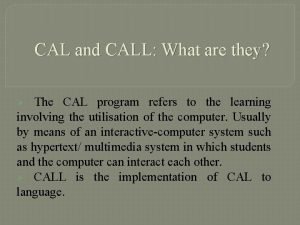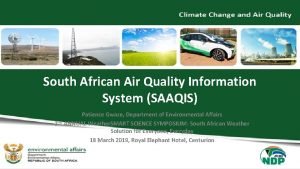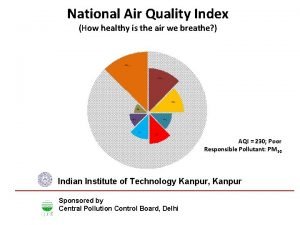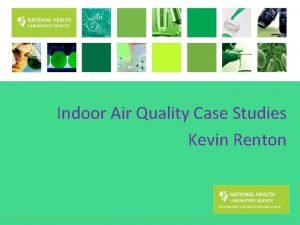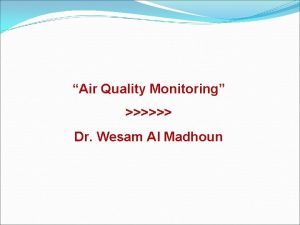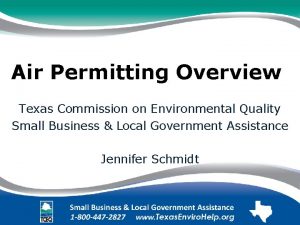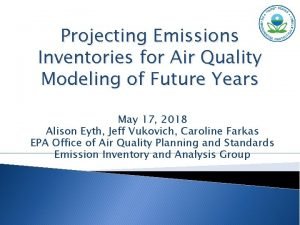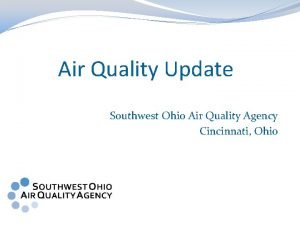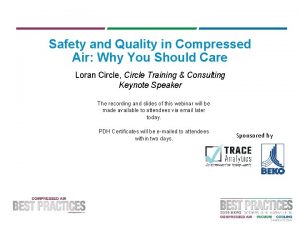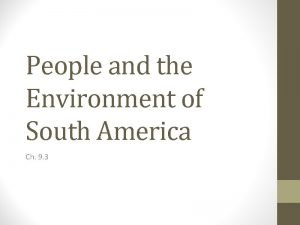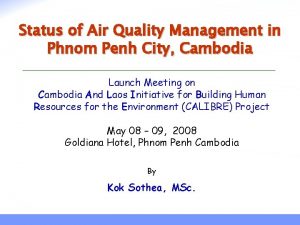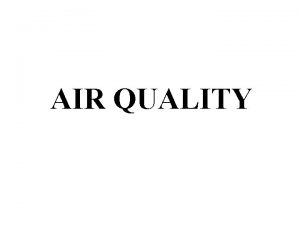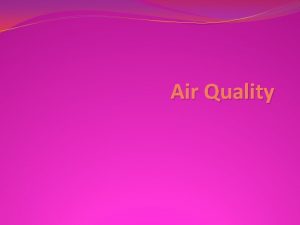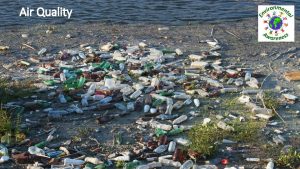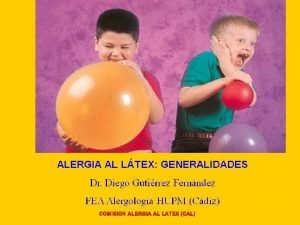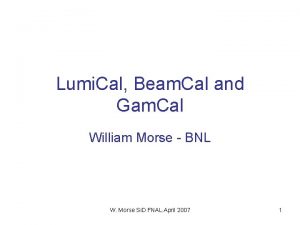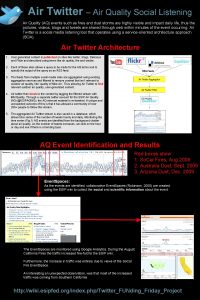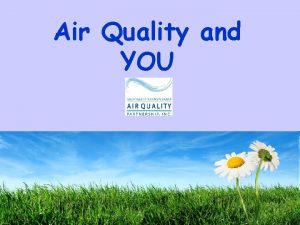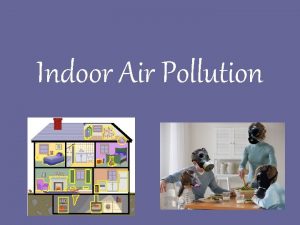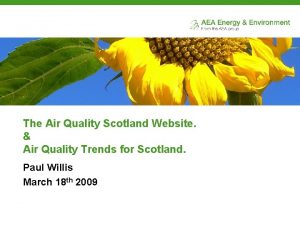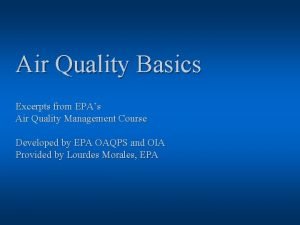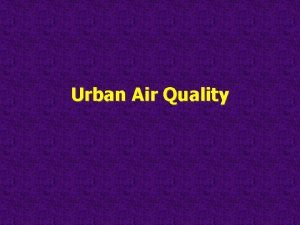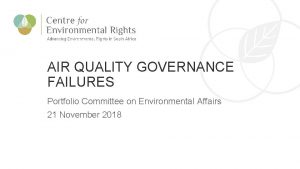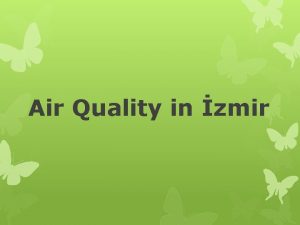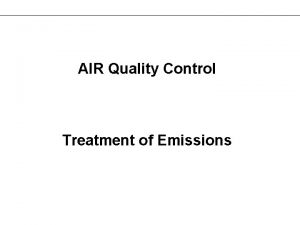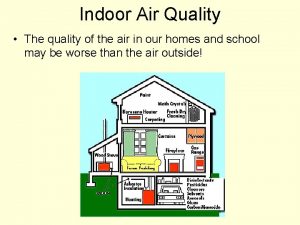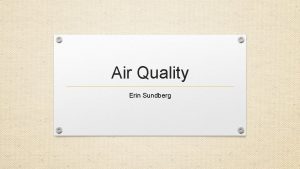Cal EEMod Tricks of the Trade Air Quality






























- Slides: 30

Cal. EEMod Tricks of the Trade Air Quality and Climate Change Workshop AEP 2019 Conference

Session Outline 1. 2. 3. 4. General recommendations Construction: off-road, on-road, mitigation Operational: mobile, area, energy, mitigation Takeaways and Resources

General Recommendations • SCAQMD’s “Tips for Using Cal. EEMod” extremely handy

General Recommendations • The infamous “cascade defaults” button ØStart your run with this box checked ØEnter land use data and then move to construction screen ØOnce you start entering project-specific data UNCHECK the box ØWhenever you re-open your project file, you must UNCHECK the box again • Always check of your inputs before re-running a file • Make changes to defaults in small chunks – run reports frequently to make sure the model calculates properly

Construction: Off-Road Tips • Make sure construction is complete during or before your operational year (selected on the Project Characteristics Screen) • BE VERY WARY of construction defaults (phases and equipment) ØDefaults are based on acreage values in the land use screen (not sqft) ØNever use defaults for projects over 4 stories tall or >35 acres in size

Construction: Off-Road Tips • Do not delete equipment; enter “ 0” for equipment number instead • If you change an equipment type, default HP and LF will not load • If you change the default HP to a value higher than the ranges listed in Table 3. 4 of Appendix D in the User’s Guide, construction emissions will be zero (e. g. >16 for dumpers/tenders) • Defaults don’t account for material haul or excavation; you need to enter this manually • The default grading phase does not have graders

Construction: On-Road Tips • Do not trust the default vendor trip rate! ØDefault = 0. 18 daily trips per 1, 000 square feet (building construction phase) ØDoes not take into account the construction phase duration ØExample: 2, 000 square feet, 4 years of construction = 0. 18 * 2, 000 = 360 trips per day * 4 years * 260 days/year = 375, 000 total vendor trips. • Water trucks are included in vendor trips; but you can re-write vendor trips • “# Trips per day” = one-way trips, not roundtrips. Be careful! • If you have haul trucks operating during multiple phases or on a different schedule, you will need to manually account for this • Enter both material import (e. g. CY) and trips per day for haul trips • Silt loading values may be overestimated; use CARB method

Operation: Mobile Sources • Match your VMT to the traffic study: ØTrip rate = one-way trips per day ØPrimary, divert, and pass-by trip percents = be consistent with traffic report ØTrip rate * land use size * trip length * 365 = annual VMT ØMake sure total annual VMT in output matches traffic report total VMT

Operation: Mobile Sources • Default fleet mix includes all vehicle types, including HD trucks ØDoes your traffic report include buses and HD trucks? Delivery / loading? ØOr only light-duty and passenger vehicles? ØYou will need to adjust the fleet mix to account for this • Does not account for land use types – all are the same

Operation: Mobile Sources 100% Average Pounds Per Day 400 90% 370 MH 80% SBUS MCY 70% UBUS 60% OBUS 350 320 300 250 HHD 50% MHD 40% LHD 2 30% LHD 1 MDV 20% LDT 2 10% LDT 1 200 152 150 100 62 50 39 60 35 31 17 LDA 0% Default Monterey County Adjusted Light. Duty fleet 16 0 ROG NOX Default Monterey County CO PM 10 Adjusted Light-Duty fleet PM 2. 5

Operation: Mobile Sources • Cal. EEMod Uses EMFAC 2014 emission rates, not EMFAC 2017 • Key differences between 14’ and 17’: ØFleet characterization: new vehicle registration data ØIn-use emissions: extensive emission testing for LD and HD vehicle ØActivity profiles: new travel survey and HD truck data ØNatural gas trucks are included ØGHG module: updated emission rates and N 2 O emissions ØTransit bus module: new bus activity and emissions data

Other Cal. EEMod Limits • Zero net energy buildings • Future updates to Title 24 standards (e. g. 2019) • Future state regulations, like RPS and SB 350 • Charbroiling emissions (PM, ROG, and other TACs) • Short-lived climate pollutants (e. g. black carbon and HFCs) • Electric pumps (e. g. pool pumps) • Model-year engine requirement as mitigation

Takeaways 1. 2. 3. 4. 5. 6. 7. Check all your inputs on every screen before re-running Run reports frequently and save often Don’t use defaults unless you have to (esp. construction) Run the right report depending on your threshold Be aware of Cal. EEMod limitations and model separately as needed Integrate off-model calculations correctly QA your results; compare to other similar projects

Resources Resource URL Cal. EEMod Tips http: //www. aqmd. gov/caleemod/user's-guide/users-tips ARB Biodiesel Study (2011) • https: //www. arb. ca. gov/fuels/diesel/altdiesel/20111013_CARB%20 Final%20 B iodiesel%20 Report. pdf • https: //www. arb. ca. gov/fuels/diesel/altdiesel/20150521 RD_Staff. Report. pdf EMFAC 2017 https: //www. arb. ca. gov/emfac/2017/ Silt Loading https: //www. arb. ca. gov/ei/areasrc/fullpdf/full 7 -9_2016. pdf ARB ATCM (generators) https: //www. arb. ca. gov/diesel/documents/Final. Reg 2011. pdf

Questions? For additional questions, please contact: Brian Schuster Environmental Science Associates bschuster@esassoc. com 455. 262. 2308

EXTRA SLIDES

Project Characteristics Screen • Make sure you select correct “Operational Year” ØYour construction phases MUST start and end before operational year • If analyzing GHGs, make sure you find the right utility emission factor ØIf you want to incorporate RPS, you will need to do so manually (Cal. EEMod does not account for RPS and changing power generation profiles)

Land Use Screen • If you have asphalt paving, such as a road or parking lot: Øyou MUST select a parking land use subtype (parking lot, parking structure, other asphalt surfaces, or other non-asphalt surfaces) ØA parking structure or other non-asphalt surfaces are assumed to be concrete with no off-gassing • If you ONLY want construction emissions, enter the following: Ø“other asphalt surfaces” for asphalt paving Ø“User Defined Residential” and “User Defined Commercial” - specify the correct building square footage for architectural coating emissions ØEnsure the total acreage at the bottom of the land use screen is accurate: this is the basis for default construction schedule and equipment list. • If you ONLY want operational, you must have one construction phase

Construction: On-Road Tips • What about non-hauling trucks? (equipment mobilization, cement trucks, onsite pickup trucks, etc. ) ØOption 1: increase # of truck trips to account for ALL truck types ØOption 2: separate phases for other truck types (no off-road equipment) ØOption 3: run emissions outside of Cal. EEMod using EMFAC 2017 • What about onsite truck activity? E. g. driving around site Ørun emissions outside of Cal. EEMod using EMFAC 2017 • What about truck idling? ØTypically 15 min per roundtrip: 5 min check-in, 5 min check-out, 5 min loading ØUse EMFAC 2017 idling emission rates (grams per vehicle hour)

Construction: Mitigation Tips • If you change construction equipment numbers, the “Total Number of Offroad Equipments” field will not automatically update • Don’t combine Tier 4 engines with DPFs; this double-counts PM reductions (tier 4 + level III DPF = tier 4 interim) ØTier 4 Final vs. Interim: interim reduces PM, final reduces NOX

Construction: Mitigation Tips • Mitigated emissions may be higher than unmitigated emissions, depending on year of construction and engine tier: ØIn some instances, the statewide fleet mix average for a particular equipment type, year, and HP may be lower than the engine tier standard • Can’t select different mitigation options for the same equipment types in different phases; equipment is grouped by type

Construction: Out of Model Mitigation • Biodiesel (or renewable diesel) reduces emissions (except for NOx) for on-road trucks and off-road equipment ØCal. EEMod only has B 20 option for off-road equipment ØFor other fuels (B 50, B 100) or on-road, calculate outside Source / Fuel On/Off-road ROG CO NOx PM CO 2 Cal. EEMod / B 20 Off-road -20% -10% +2% -10% -20% ARB 2011 / B 100 Off-road -28% -25% +14% -50% -2% ARB 2011 / R 100 On-road -12% -33% -18% -28% -3%

Operation: Mobile Sources EMFAC 2017 Update PM Change NOx Change Truck and bus rule ↑ Increase n/a ↑ Increase Heavy-Duty Emission Rates ↑ Increase Heavy-Duty Start emissions n/a ↓ Decrease Heavy-Duty Idle emission factors ↑ Increase Heavy-Duty Activity Profiles ↑ Increase Transit Bus Emissions / Activity ↓ Decrease n/a ↑ Increase Heavy-Duty PM deterioration Light-Duty Emission Rates Source: ARB Workshop (November 9, 2018); preliminary results, subject to change

Operation: Area Sources & Energy • Fireplaces and woodstoves are default; do you have these? • All land uses have consumer products as default, including parking lots and golf courses; if you have these, adjust the emission rate • Architectural coatings: check your square footages • Cal. EEMod version 2016. 3. 2 incorporates 2016 Title 24 standards • If your project is built after 2020, it must comply with 2019 standards ØCan use mitigation measure as a proxy (% below T 24) ØOr calculate energy intensities offline and enter in the “Energy Use” tab

Operation: Mitigation • What do your Traffic Report trip rates include? ØAre these truly “unmitigated” values? ØWhat project design features are already accounted for? ØAre you double-counting mitigation? • Traffic mitigation based on CAPCOA (2010) methods; does not account for double-counting, so be wary of combining strategies • Percent below Title 24 can be used as a proxy for future standards • Electric vehicles are not a mitigation measure • If using low-VOC coatings, check your unmitigated values

Operation: Mitigation

Operation: Out of Model Mitigation Electric Vehicle (EV) Infrastructure • Step one: Determine EV Ownership and use based upon infrastructure availability. ØSources of data: o California DMV Records o CARB: Plug in Electric Vehicle Ownership Study o Plug in America. Org o American Public Power Association

Operation: Out of Model Mitigation Electric Vehicle (EV) Infrastructure • Step Two: Determine Vehicle type being replaced by EVs. ØEMFAC: o Light duty passenger car gasoline o Light duty passenger car diesel • Step Three: Determine VMT Replacement. • Step Four: Determine Charging consumption (k. Wh) ØEF for electrical use for GHG emissions only

Running Reports • Annual or daily? • What is your threshold? ØBAAQMD = average daily ØSCAQMD = max daily • GHGs = always use annual report • Off-model calculations: be careful to align your schedule of off-model emissions (like additional truck trips) with your Cal. EEMod phases and max daily time period

Running Reports • Are you conducting an HRA? ØIf so, you will need to calculate total annual DPM emissions (PM 10) at a minimum • Export to excel and convert text to number ØCal. EEMod excel output format is funky; tread cautiously
 Eemod
Eemod Cal and cal
Cal and cal Air higroskopis air kapiler dan air gravitasi
Air higroskopis air kapiler dan air gravitasi Trade diversion and trade creation
Trade diversion and trade creation Trade diversion and trade creation
Trade diversion and trade creation Trade diversion and trade creation
Trade diversion and trade creation The trade in the trade-to-gdp ratio
The trade in the trade-to-gdp ratio Fair trade not free trade
Fair trade not free trade Trade diversion and trade creation
Trade diversion and trade creation Tramp and liner shipping
Tramp and liner shipping Triangular trade
Triangular trade Quality assurance vs quality control
Quality assurance vs quality control Quality control vs quality assurance pmp
Quality control vs quality assurance pmp What are quality standards in project management
What are quality standards in project management Quality assurance model in nursing
Quality assurance model in nursing Compliance vs quality
Compliance vs quality Quality assurance concepts
Quality assurance concepts Quality gurus of tqm
Quality gurus of tqm Quality is free
Quality is free Old quality vs new quality
Old quality vs new quality Saaqis
Saaqis Air quality index calculation
Air quality index calculation Air quality renton
Air quality renton Ambient air quality standards
Ambient air quality standards St louis air quality
St louis air quality Texas air quality permits
Texas air quality permits Air quality
Air quality Southwest ohio air quality agency
Southwest ohio air quality agency Air quality
Air quality Sao paulo air quality
Sao paulo air quality Phnom penh
Phnom penh

